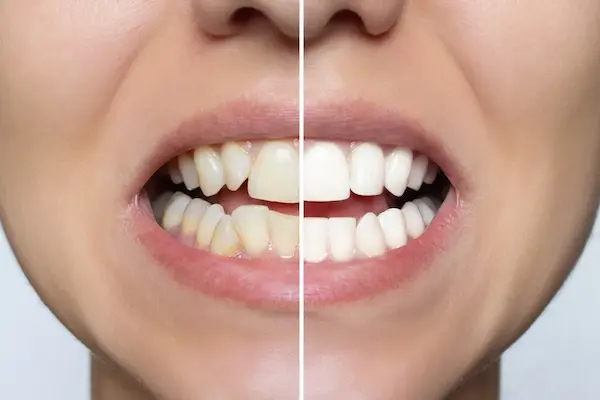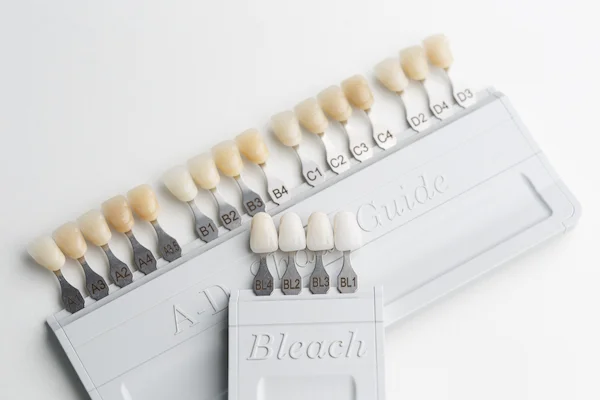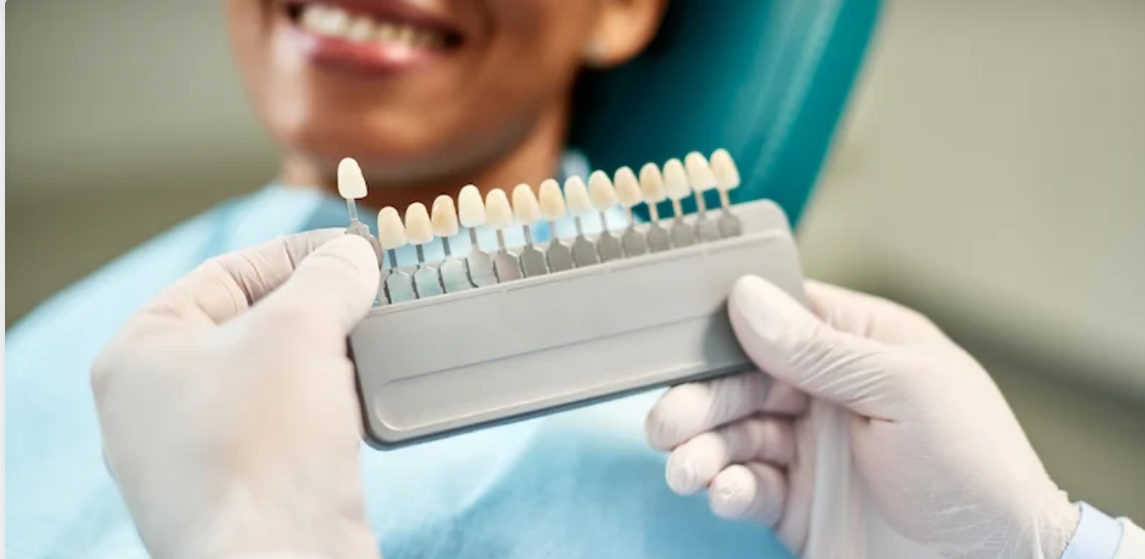Are you looking for a quick solution to cover teeth-related defects? Rely on dental veneers to make your smile more harmonious and correct defects in the shape, position, and colour of your teeth. In this blog, LerraClinic will talk about how long veneers take to heal and how to prolong the lifespan of dental veneers.
The entire process of getting veneers, including preparation and recovery stages, typically takes two to three weeks and may require multiple appointments.
Continue reading this informative guide and follow our tips to take care of your smile.
Table of Contents
Introduction to Cosmetic Dentistry
Discover the transformative world of cosmetic dentistry and how veneers play a pivotal role.
Cosmetic dentistry has revolutionized the way people achieve their dream smiles. With various procedures available, individuals can now address a range of dental concerns, from discolored teeth to misaligned bites. One of the most popular and effective solutions in cosmetic dentistry is dental veneers.
Porcelain veneers, in particular, have gained widespread acclaim for their durability and natural appearance. By understanding the principles of cosmetic dentistry and the role of veneers, individuals can make informed decisions about their dental treatment and embark on a journey to a more confident, radiant smile.
What Are Veneers?
Porcelain dental veneers, also called veneers, are sheets of porcelain or composite resin with a very thin thickness ranging from 0.5 to 0.7 millimeters; these plates are glued onto the teeth to correct defects in the shape and color of the teeth and restore the normal chewing functions of the mouth.
These veneers which are very often considered as real dental prostheses are applied directly to the external surface of the tooth to improve the aesthetics of the teeth and solve chewing problems.
Their purpose is to improve dental aesthetics, the teeth become whiter again, and the black spaces between the teeth are reduced. They can be used to correct problems such as defects in shape, position, color, or dental stains.
The veneers are adapted and fixed on the teeth so that they perfectly match the shape and size of the existing teeth. Veneers can also help preserve the natural tooth structure, especially when composite resin is used, as it requires less removal of the natural tooth compared to porcelain.

Another of the objectives of dental veneers is to restore normal masticatory functions following any trauma (chipped teeth or dental fractures), or following normal dental wear due to teeth grinding, bruxism, or bad habits such as biting objects or biting your nails.
Dental Veneers Behind The Scenes: Preparation Techniques
In recent years the dental team, made up of an aesthetic dentist and dental technician, has been subjected to increasingly demanding requests from patients regarding the aesthetics of the smile.
These requests combine high-level aesthetics with minimally invasive interventions.
Dental veneers are the best solution for this type of need. These are prosthetic devices made up of ceramic plates the thickness, in some cases, of just a contact lens, which is applied to the external surface of the tooth to improve the aesthetics of the smile (but not only that, they can also strengthen weakened teeth from wear or abrasion). These prosthetic products, therefore, allow the definitive and extremely satisfactory resolution of defects in the shape, color, and position of the teeth where this is not possible with orthodontics, teeth whitening, or other techniques.
Another extremely positive aspect of veneers is that they are minimally invasive restorations compared to classic prosthetic crowns, which require demolishing up to 70% of the tooth structure. To prepare the tooth for veneers, the dentist removes a thin layer of enamel and uses a local anesthetic to minimize discomfort during the procedure.
Today we want to tell you how these little dental jewels are made. Let’s start with the material:
dental veneers can essentially be made using composite material or ceramic material. Specifically, we will discuss how the dental laboratory creates ceramic veneers, using a ceramic material called lithium disilicate. This particular type of ceramic has optical characteristics (therefore light refraction and fluorescence) which are very similar to those of natural tooth enamel.
- The Dental Process The dentist, after having discussed with the patient and created a ‘mock up,’ i.e. a simulation of the final aesthetic result obtainable with veneers, slightly prepares the surface of the tooth for a better adaptation of the prosthetic product and takes an analogue or digital impression of the mouth. The direct application of resin onto the tooth surface can often be completed in a single appointment with little to no preparatory work required.
- The Ceramic Structure The ceramic structure of the veneers is created on the basis of this impression. The laboratory prefers to make lithium disilicate veneers through die casting in a high-temperature oven, which gives rise to a very precise and resistant product.

- Refining the Veneer Once the casting has cooled, the technician sands and cleans the ceramic material under the microscope. At this point, the dentist tries the raw veneer in the patient’s mouth to check its perfect fit. Subsequently, the final color is taken and the dental technician finishes the veneer itself, painting it or layering it with other ceramics as appropriate.
- Final Veneer Placement Finally, the veneer perfectly adapted to the patient’s aesthetics in color and shape, will be permanently cemented onto the tooth by the dentist.
Porcelain Veneer Placement and Cost
Understand the process and financial aspects of getting porcelain veneers.
The porcelain veneer procedure involves several steps, starting with an initial consultation to discuss the desired outcome and assess the patient’s oral health. The tooth preparation process is then undertaken, where a thin layer of enamel is removed to make room for the veneer. Impressions are taken and sent to a dental laboratory for the creation of the custom veneers. Once ready, the porcelain veneers are bonded to the prepared teeth using a special adhesive. As for the cost, porcelain veneers cost more upfront compared to composite veneers, but they offer better long-term value due to their durability and resistance to stains. The porcelain veneer placement process requires precision and expertise, making it essential to choose an experienced cosmetic dentist for the best results.
Tips for a Smooth Recovery from Dental Veneers

Oral hygiene in the days following treatment must be delicate so as not to bother the gums. These, during cementation, are normally separated to improve adhesion. It is not a painful procedure that requires pain relief therapy, but the resulting irritation can last a few days.
It is therefore advisable to clean with a soft bristle toothbrush and with a unidirectional movement from the gum towards the tooth. This movement does not further irritate the gums, which will return pink and well adhered to the tooth within a few days. Avoiding habits that can damage veneers, such as chewing on hard objects or using teeth as tools, is crucial during this period.
Once the veneers have been cemented they are one with the tooth and, with the new materials, there is no risk of them coming loose. It is therefore advisable to use all hygiene aids such as toothbrushes, toothpaste, and dental floss.
The diet does not presuppose any particular limitations even if it is always a good practice, after having consumed particularly staining elements such as coffee, tea, red fruits, or cigarette smoke, to rush and brush your teeth! Ceramic veneers must be subjected to regular checks by the dentist, especially regarding occlusion with the teeth of the opposite arch.
If the patient suffers from disorders such as bruxism (grinding the teeth at night) it is advisable to provide a protective mask (night-guard) to be worn every night. Properly controlled veneers have an average lifespan of between 10 and 20 years if properly cared for and controlled. Adhering to proper care, including good oral hygiene, dietary restrictions, and regular dental check-ups, can significantly extend the lifespan of your veneers.
Importance of Oral Hygiene
Learn why maintaining oral hygiene is crucial for the longevity of your veneers.
Maintaining good oral hygiene is vital for the longevity and success of dental veneers. This includes regular brushing with non-abrasive toothpaste, flossing, and regular dental check-ups. It’s also important to avoid habits that can damage the veneers, such as teeth grinding or biting into hard objects.

By following these guidelines and attending regular dental visits, individuals can ensure their veneers remain in excellent condition and continue to enhance their smile for years to come. Additionally, using desensitizing toothpaste and avoiding hot or cold foods and drinks can help manage sensitivity, a common issue during the recovery process after veneer placement. A soft-bristled toothbrush and alcohol-free mouthwash are also recommended for gentle cleaning and to maintain gum health. By prioritizing good oral hygiene, individuals can protect their investment in porcelain veneers and enjoy a healthy, beautiful smile.
Choosing the Right Type of Veneers for Your Recovery
There are different types of dental veneers on the market, the most common are those made of porcelain or composite resin.
Porcelain veneers are known for their durability and natural appearance, while composite resin veneers are often more affordable and require less tooth preparation. However, composite resin veneers may need more frequent replacement compared to their porcelain counterparts. Recently, other more innovative materials have also entered the market, such as componeer.
Lithium Disilicate Dental Veneers (Ceramic material) Lithium disilicate veneers are custom-fabricated in the laboratory and then applied to the patient’s teeth. They require a certain amount of work and for this reason, are more expensive.
But thanks to the high resistance of the ceramic material to impacts, scratches, and fractures, the lifespan can exceed 10 years, if treated with due care. Furthermore, the aesthetic result is more natural in terms of brilliance and color.

Componeer Dental Veneers (A Direct Veneering Technique) Componeers are nano-hybrid composite enamel shells, cured and performed, which combine the advantages of direct composite restoration with the advantages of preformed lithium disilicate veneers. These veneers are quick to apply (even just one session may be enough), the tooth is subjected to very light filing before applying the veneer, its appearance is healthy and natural and the final cost is cheaper than Lithium disilicate veneers.
Your smile is a powerful asset, and if you’re thinking about a smile makeover or a restoration of your teeth, dental veneers can be a wonderful option. This ultra-thin, custom-made veneer is designed to cover the front of your teeth, hide imperfections, and give you a beautiful smile. However, the veneer world offers a variety of options, and it’s important to choose the right one for your unique needs. In the table below, we will explore the types of veneers available and the recovery process for each.
Some types of veneers, particularly composite resin and minimal-prep veneers, may require more frequent replacement compared to traditional porcelain veneers.
| Type of Veneers | Material | Durability | Enamel Reduction | Sensitivity | Maintenance | Longevity |
|---|---|---|---|---|---|---|
| Traditional Porcelain Veneers | Porcelain | High | Requires some enamel | May experience initial sensitivity | Brush and floss regularly, dental visits | 10-15 years or more |
| reduction, irreversible | after placement, usually subsides | for check-ups | ||||
| Composite Veneers | Resin | Moderate | Minimal or no enamel | May experience initial sensitivity | Regular polishing may be needed | Several years with care |
| reduction, reversible | after placement, may persist with | to prevent staining | ||||
| Minimal-Prep Veneers (e.g., | Ultra-thin, porcelain- | Moderate | Minimal | Typically less discomfort, minor | May need more frequent replacements | Several years, may require more |
| Lumineers) | like material | post-procedure adjustments may be | and touch-ups | replacements | ||
| Instant Orthodontics Veneers | Thin veneers | Moderate | Minimal | Minimal discomfort, bite changes | Proper oral hygiene, regular check-ups | Variable |
| may normalize quickly | may be necessary | |||||
| CEREC Veneers | Ceramic (usually) | Moderate | Minimal | Minimal discomfort | Post-placement check-ups may be | Variable |
| necessary |
What Can We Do for you at LerraClinic?
The first visit to LerraClinic includes various phases to be able to formulate a specific treatment plan studied and personalized for each clinical case that comes under our observation.
In simpler words, we will study the patient’s mouth and offer him the most appropriate and innovative veneer options to restore or preserve the health of his smile. It is crucial to consult experienced cosmetic dentists to ensure optimal results and satisfaction with the cosmetic enhancements.
- Phase 1: A dental medical history is collected to understand the patient’s health status, both systemic and dental, and we ask him to tell us his clinical history.

- Phase 2: intraoral and extraoral dental examination, i.e. inside and outside the mouth. This sometimes also happens thanks to the help of radio diagnostic tools such as intraoral x-rays and panoramic images, which allow the dentist to draw up a diagnosis of the specific case.
- Phase 3: if the case requires multi-specialist interventions, there will be a consultation phase with other dentists at Lerra Clinic. In some of these therapies, it will be necessary to investigate the case further with second-level radiographic tests such as, for example, a CT scan.
- Phase 4: After the consultation, a therapeutic plan is drawn up which corresponds to a quote that illustrates, with clear and detailed expense items, the therapies proposed by the LerraClinic team of specialists.
- Phase 5: presented with the estimate, the patient is then asked to consider it calmly and, if he agrees to accept it (signing it) he can entrust the care of his mouth to LerraClinic: you will be asked to carefully read the estimate and the informed consent document presented by our operators. These contractual documents clearly set out the risks and advantages of the proposed therapies (or alternative therapies reported in the documentation). The operators are available to the patient to welcome his questions and answer any type of doubt.
- Phase 6: the patient who has accepted the treatment and care path, and therefore the estimate, will coordinate with our dentist at LerraClinic, and the acceptance which, based on the patient’s needs and the availability of the clinic dentist, will identify the best days and times to schedule the appointments needed to take care of your oral health.
Let’s Sum It Up!
Veneers offer some stain resistance; however, it is advisable to try to minimize exposure to staining agents such as tea, coffee, and smoke, which tend to darken natural teeth and dental restoration work. With proper care, you can confidently showcase your new smile in any social situation.
For those looking for a result that is far more effective and long-lasting than that offered by teeth whitening or for patients who have already resorted to a teeth whitening treatment without finding particular benefits, aesthetic veneers represent a certainly valid alternative. It is also important to protect veneers while dining out or attending events to maintain their appearance and longevity.
Thanks to dental veneers at LerraClinic, patients are able to completely recover the functionality of the compromised dental elements and once again obtain pleasant and satisfactory aesthetics..
Contact us today and get the best offer!
Read Also:
Why Are Dental Veneers Cheaper In Turkey?
A Complete Guide About Hollywood Smile in Turkey
FAQs
Are Veneers Permanent?
Yes, it is permanent and was made especially to stay with you for the rest of your life.
How Long Do Dental Veneers Last?
Dental veneers last between 10 and 20 years.
How Often Do Veneers Need To Be Replaced?
The average lifespan of a dental veneer is about 10 years.
How Can I Make My Veneers Last Longer?
Stop Your Tooth Grinding Habits: Invest in a Regular Dental Care Routine, Get a Better Toothbrush, Stay Away from Hard Foods, Avoid Dark Foods Too, Try to Stop Smoking
How long does it take for veneers to settle in?
Veneers typically set within a few weeks to a month after application.
How soon can you eat after veneers?
The longest you would have to go without meals is a day, and some patients can start taking soft foods in as little as two or three hours.
Can you go back to normal after veneers?
Yes, you can get veneers and go back to normal. Veneers are designed to look and function like natural teeth, allowing you to eat, talk and smile like before.
What Are Porcelain Veneers?
Porcelain veneers are crafted from a thin ceramic material that is specifically shaped to fit your teeth.
Can I brush and floss as usual with veneers, or are there special precautions?
The same technique you use for brushing and flossing your natural teeth should be used here.
Is it normal to experience some discomfort during the initial days after getting veneers?
Yes it’s normal, this usually lasts for a few days after the procedure, slowly fading away.

